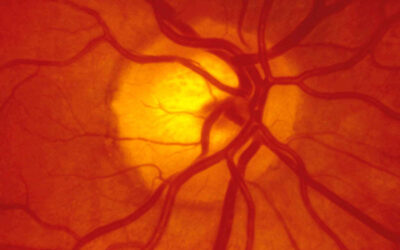Types Of Vision Problems
Every day, our team of highly qualified eye care professionals diagnose and treat a wide range of vision problems in patients of all ages, from cataracts that cause cloudy areas in the eye, to colour impairment which can make it difficult to tell colours apart, to nearsightedness, or myopia, which can make far-away objects such as oncoming traffic or the television look blurry and out-of-focus.
While many eye conditions are not serious, others may indicate a more serious underlying issue that warrants further investigation. So no matter your concern, whether you need a regular eye exam, or have a specific problem that is interfering with your vision or daily life, we’re here to help.
Our optometrists can give you peace of mind using advanced technology to detect changes early, and accurately discern between various conditions that may appear to have similar symptoms at first glance. This allows you to begin appropriate treatment promptly to preserve your sight and maintain your overall eye health.
Some of the most common eye conditions that our optometrists see include:
Flashes and Floaters
Floaters are small dark shapes that float across your vision, and they can look like spots, threads, squiggly lines, or even little cobwebs. Flashes are bright lights in your vision that can appear similar to light streaks, camera flashes, or shooting stars.
Many people have flashes and floaters that come and go especially as they age, and they often don’t need treatment. But sometimes, they can be a sign of a more serious eye condition. If you notice new floaters or flashes that appear suddenly, or that don’t go away, it’s important to contact your optometrist.
Colour Impairment
Those with colour impairment (also known as colour blindness), see colours differently than most other people, though they may not know it. The most common type of colour impairment can make it hard to tell the difference between red and green, other types may make it hard to tell the difference between blue and yellow, and in rare cases those who are completely colour impaired don’t see colour at all.
Colour impairments tend to run in families and there’s no cure, but most people who are colour impaired are able to adjust and don’t have problems with everyday activities. If needed, optometrists can prescribe custom glasses and contact lenses which can help to improve a person’s vision.
Nearsightedness
Also known as myopia, is a common refractive error of the eye that affects a person’s ability to see distant objects clearly – instead making them appear blurry or distorted. This condition occurs when the shape of the eye causes light to focus in front of the retina (the light sensitive tissue at the back of the eye) instead of directly on it, leading to blurred distance vision.
People with nearsightedness can typically see objects clearly up close, but they have difficulty seeing objects that are far away, such as road signs, television screens, or whiteboards in classrooms. Some common signs and symptoms of nearsightedness include squinting, headaches, eyestrain, and difficulty seeing while driving, especially at night.
Farsightedness
Medically known as hyperopia, farsightedness is the opposite of nearsightedness where it’s the nearby objects that look blurry and distorted. Here, the shape of the eye causes light to focus behind the retina instead of on it, leading to blurred near vision.
People with farsightedness can typically see objects clearly at a distance, but they have difficulty seeing objects that are up close, such as when reading, sewing, or using a computer. Some common signs and symptoms of farsightedness include eye strain, headaches, difficulty focusing on near objects, and crossed eyes in severe cases.
Astigmatism
Having astigmatism can make both far-away and nearby objects look blurry or distorted. Specifically, this condition occurs when the cornea or lens of the eye is not perfectly round, causing light to be focused in multiple directions instead of one point on the retina.
People may also have difficulty seeing fine details or differentiating between similar shapes or letters. Some other signs and symptoms of astigmatism include eye strain, headaches, and difficulty driving at night due to the vision disturbances created.
Presbyopia
Presbyopia is an age-related condition that affects the ability of the eyes to focus on nearby objects. It is a natural part of the ageing process, and typically begins to develop in people aged in their mid-40’s and over. Presbyopia occurs when the natural lens of the eye becomes less flexible and cannot change shape as easily as it used to, making it more difficult to focus on close-up objects. People with presbyopia may experience difficulty reading small print, doing close work such as sewing or knitting, or using a computer for extended periods. Common signs and symptoms of presbyopia include blurred vision, eye strain, headaches, and difficulty reading in low light conditions.
Night Blindness
Night blindness, also known as nyctalopia, is a condition in which a person experiences difficulty seeing in low light conditions, such as at night or in dimly lit environments. This condition can be caused by a variety of factors, including vitamin A deficiency, genetic conditions, diabetes, certain medications, cataracts, and age-related macular degeneration, among other conditions.
People with night blindness may have trouble driving at night, navigating in low light conditions, or performing tasks that require good vision in dim lighting. Additionally, a person may experience impaired depth perception, and increased sensitivity to glare.
Double Vision
Double vision, also known as diplopia, is a condition in which a person sees two images of a single object, either side-by-side or one on top of the other. Causative factors can include eye conditions, eye muscles, nerves, or brain trauma. There are two main types of double vision: binocular and monocular.
Binocular double vision occurs when both eyes are open and looking at the same object, while monocular double vision occurs when one eye is closed.Common causes of binocular double vision include having misaligned eyes, suffering a head injury or other trauma, having neurological conditions such as multiple sclerosis, being affected by thyroid eye disease, and more.
Monocular double vision can be caused by problems with the eye itself, such as a cataract, corneal irregularities, or astigmatism.
Dry Eyes
Dry eyes can make your eyes feel scratchy, sore, stinging and sensitive to light, or as if you have a speck of sand trapped in your eye. Dry eyes happen when your eyes don’t make enough tears to stay wet, or when your tears don’t work correctly, and contributing factors to this can include time spent staring at your phone or computer which reduces our blinking rate, exposure to smoke or dry air, wearing contact lenses, allergies, and even the ageing process.
Dry eyes can make your eyes feel uncomfortable, and in some cases it can lead to vision problems. Fortunately, there are many strategies you can use to keep your eyes healthy and stay comfortable. Read more about dry eyes here.
Cataracts
Cataracts refer to opaque patches that develop within the lens of the eye. They are a leading cause of vision loss, especially in those over 80 years of age, as well as those who have been exposed to harmful UV rays, have been smokers, or have diabetes. Initially, symptoms may not be noticeable, but over time, vision can become blurry, hazy, and less colourful, making everyday activities such as watching TV difficult. Fortunately, cataracts can be successfully removed with surgery, which may involve implanting an artificial lens.
Optometrists can detect cataracts in their early stages through a comprehensive eye exam.
No matter your concern, we’re here to help. To book your comprehensive eye exam with one of our experienced team members, contact one of your local clinics here.




